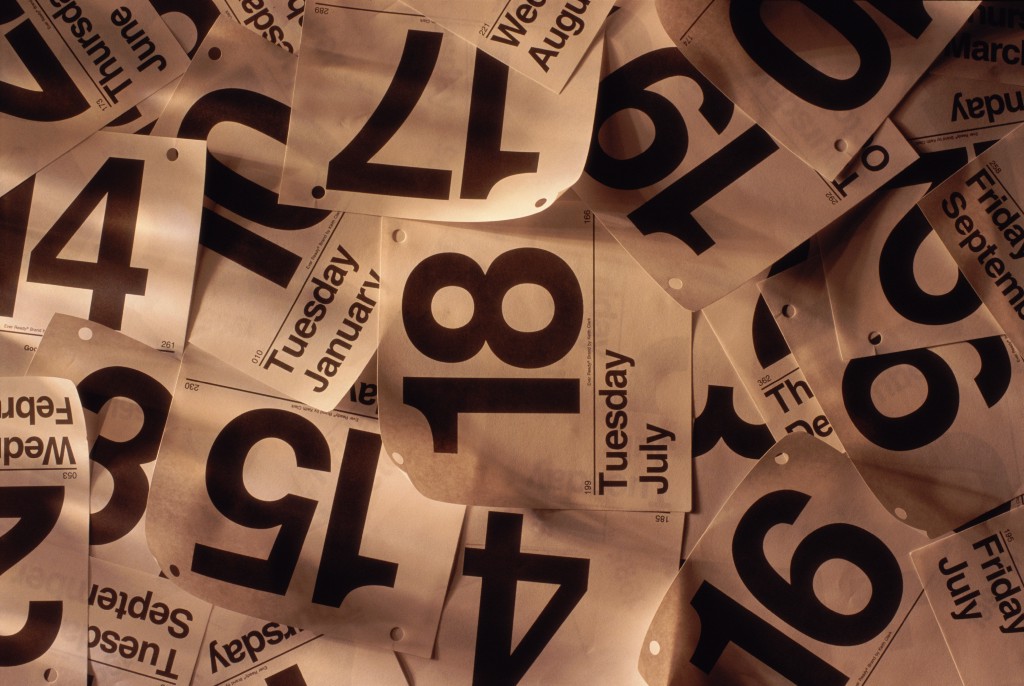We May Be Living In The Year 1719

Conspiracy theorists say 300 extra years were added to our calendar.
Sometimes I lose a few hours. Like if I have 14 drinks, for example, and I can’t remember how I got home. Or if I’m flying overseas and I’m like, Whoa, my watch says it’s 1:05 but all the clocks here say it’s 7:05. Or if I’m in a coma. That sort of thing.
But for an entire civilization to bungle three centuries’ worth of bookkeeping and chug along without noticing? It’s a dubious theory, at best. But that’s just what the Phantom Time Hypothesis proposes.
In a nutshell
1995: Nirvana releases “Nevermind.” Swayze is the Sexiest Man Alive. Pee Wee gets arrested for self-massage in an adult cinema. And German historian Heribert Illig publishes a paper alleging that someone fudged the Gregorian calendar by 297 years.
That’s right — Illig believed that “by accident, by misinterpretation of documents or by deliberate falsification,” three centuries had been added to the calendar. Which would mean that we in 2016, right now, are actually living in the early eighteenth century.
So what’s his argument? Well, according to both Illig and fellow conspiracy buddy Dr. Hans-Ulrich Niemitz, there’s a wealth of evidence to suggest the years between 614 and 911 AD never happened.
The evidence
Niemitz and Illig suggest that somebody (or somebodies) had reason — and means — to change the calendar. They point to architectural disparities (nothing got built in Constantinople for, like, a long time!). They talk about theological doctrine (there was no doctrinal evolution in the Catholic Church between 600 and 1100!).
They even hold up a minor mathematical screw-up in Pope Gregory XIII’s attempt to correct the Julian calendar (which was used widely in Europe from 45 BC to 1582 AD) as evidence of a vast time conspiracy. The Pope wanted to fix the Julian calendar’s error by eliminating its annual 11-minute surplus. Over 1,627 years, those 11 extra minutes each year should’ve added up to a 13-day Julian misfire. Instead, Pope Greg and his cronies found just a 10-day discrepancy — suggesting, according to Illig, somebody had inserted 300 phantom years.
Even if we buy this circumstantial hogwash, the real question is why. Why would anybody want to add 300 years to a calendar? For kicks?
One of the duo’s theories involves a conspiracy cooked up by the Church. What better way to legitimize doctrines or decrees than to backdate them by a couple hundred years and tell people it’s been that way all along? “600? No, sorry, this is the year 900. You must be mistaken. Now, give me 10% of your income, please.”
Another theory is that Roman Emperor Otto III (that rascal) wanted to reign during the nice, round year 1000. His reason? To “show he understood Christian millennialism.” Whatever that means.
The debunking
This theory, though cool in…theory, doesn’t need an energetic debunking. After all, getting the whole world on board with a 300-year forgery — and then never telling anybody about it—would have been simply impossible.
But thanks to Steven Dutch of the University of Wisconsin, we have three major pieces of provable evidence that upend Illig’s theory. (And Dutch has got more — check out his withering dissection of Phantom Time here.)
- Charlemagne lived during the “missing time.” Charlemagne was real.
- The Chinese Tang Dynasty happened during this time. The Tang Dynasty was real.
- Halley’s Comet sightings are recorded during this time.
Regardless, I’m going to leave a note for my ancestors to be delivered in 2,297: Happy Y2K!
